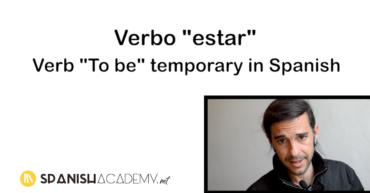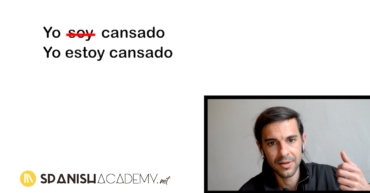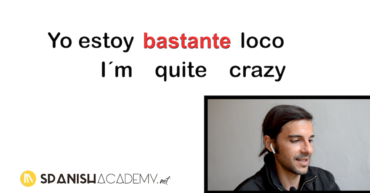Let’s keep seeing indefinite quantity adjectives. Before we had seen BASTANTE as an adverb to quantify the adjective. Remember: MI HERMANO ES BASTANTE ALTO MI BROTHER IS QUITE TALL Also, we can use this word (BASTANTE) as an adjective to a noun to give an indefinite idea when we want to express an indefinite number […]
So, let’s begin with indefinite quantity adjectives in different contexts when we want to express more than a specific quantity. Before using those adjectives, remember the numbers, definite and non-definite article using the verb HAY: ¿QUÉ HAY EN BARCELONA? WHAT IS THERE IN BARCELONA? EN BARCELONA HAY UN AEROPUERTO IN BARCELONA THERE IS AN AIRPORT […]
First of all, to start this post, we are going to learn vocabulary about the most important places that we have in a city. Whether it is a supermarket, a park, a house… INGLÉS ESPAÑOL SCHOOL ESCUELA UNIVERSITY UNIVERSIDAD TIENDA TIENDA SUPERMARKET SUPERMERCADO MARKET MERCADO SHOPPING MALL CENTRO COMERCIAL PARK PARQUE CLASS CLASE CAR COCHE […]
Therefore, as we do know: ¿CÓMO ESTÁS? HOW ARE ? (YOU) YO ESTOY BIEN I AM FINE YO ESTOY MAL I AM BAD YO ESTOY MÁS O MENOS I AM MORE OR LESS → (I AM SO SO) ◊ we have to see adjectives that will allow us to express our mental/physic state. Eventually an […]
You probably know different adjectives to describe a person’s personality. Now we are going to see them back and see if they can actually be used in a temporary idea. Let’s pick one of those adjectives to see a clear example. Let’s see NERVIOSO (nervous): → Verbo ESTAR (To be temporary) YO ESTOY NERVIOSO I AM […]
The verb HAY in Spanish is very easy in the way we use it, and, a little bit complicated in its grammar explanation; however, it does not need to be explained to have a correct use of it. Nevertheless, we are gonna give a small introduction to it. First of all, we tell you that […]
When to use the verb Ser → Let’s remember all the uses for SER (the permanent verb To Be in Spanish): Nationalities: YO SOY DE INGLATERRA I AM FROM ENGLAND ELLA ES CHINA SHE IS CHINESE Professions: YO SOY PROFESOR I AM TEACHER ELLA ES ESTUDIANTE DE ESPAÑOL SHE IS STUDENT OF SPANISH Permanent descriptions: […]
Once we have seen adjectives already, the description becomes very easy. We can use some adverbs to quantify the adjective; in other words, to give to the adjective a more clear idea of its expression (very, a little bit, quite). Is better we see some examples to clarify the explanation. Adverbs that quantify an adjective: […]
As you can already guess with the title of this post, we are going to express the location according to the cardinal points: North, South, East and West. First remember: ¿DÓNDE ESTÁ BARCELONA? WHERE IS BARCELONA? BARCELONA ESTÁ EN ESPAÑA BARCELONA IS IN SPAIN Now, let’s be a little bit more specific in its […]
In Spanish sometimes we are going to see when reading or use when speaking AL and DEL. We have mentioned it before in another post, but now, we are going to see it clear. Let’s start with AL. Basically, in Spanish when the preposition A (To) comes right before the article masculine singular EL (The), […]










